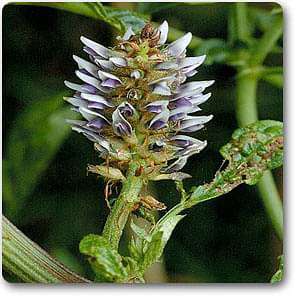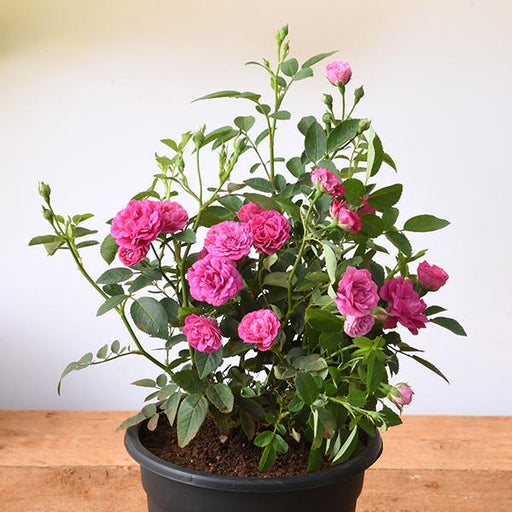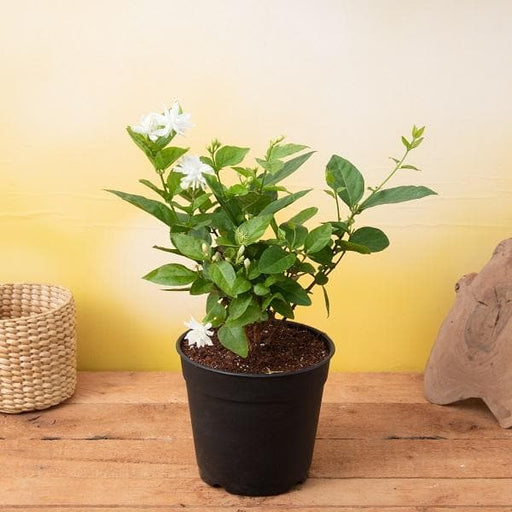
Glycycrhiza glabra - Plant
(MRP Inclusive of all taxes)
- Shipping ₹79 for entire order
- Dispatch in 7 days
- Country of origin: India

(MRP Inclusive of all taxes)
 Save 29%
Save 29%
Air Purifier Money Plant with Pot The Air Purifier Money Plant, also known as Pothos or Epipremnum aureum, is a stunning indoor plant that...
View full details
 Save up to 15%
Save up to 15%
Peace Lily, Spathiphyllum - Plant The Peace Lily, scientifically known as Spathiphyllum, is a stunning houseplant celebrated for its elegant white...
View full details
 Save 25%
Save 25%
Jasminum sambac, Mogra, Arabian Jasmine - Plant Jasminum sambac, commonly known as Mogra or Arabian Jasmine, is a fragrant flowering plant...
View full details
 Save 18%
Save 18%
Combo Constituents Includes the Parijat Tree (Night-Flowering Jasmine), a culturally significant plant with fragrant flowers. Description The Pari...
View full details
 Save 25%
Save 25%
Miniature Rose, Button Rose (Any Color) - Plant The Miniature Rose, also known as the Button Rose, is a charming and compact flowering plant that ...
View full details Save 25%
Save 25%
Damascus Rose, Scented Rose (Any Color) - Plant The Damascus Rose, also known as Rosa damascena, is a timeless symbol of beauty and romanc...
View full details
 Save 17%
Save 17%
Beautiful Fragrant Mogra, Arabian Jasmine Plant with Pot The Beautiful Fragrant Mogra, also known as Arabian Jasmine (Jasminum sambac), is...
View full details Save 15%
Save 15%
Pack of Vermicompost and Neem Cake for House Plants Transform your indoor garden with our premium Pack of Vermicompost and Neem Cake, spec...
View full details
Pack of Plant Growth and Flower Boosters Unlock the full potential of your garden with our Pack of Plant Growth and Flower Boosters! This ...
View full details Save 38%
Save 38%
Combo of Jeevamrut and Neem Raksha for Easy Growth and Protection of Houseplants Transform your indoor garden with our exclusive combo of ...
View full details Save 22%
Save 22%
Plant Nutrients Kit (Pack of 16) for a Healthy Garden Transform your garden into a lush paradise with our Plant Nutrients Kit, featuring 1...
View full details Save 16%
Save 16%
Combo of Top Plant Fertilizers Elevate your gardening game with our exclusive Combo of Top Plant Fertilizers, featuring two bags of premiu...
View full details Save 24%
Save 24%
Pack of 4 Additives to Make Soil Healthy and Nutrient Rich Transform your garden into a thriving ecosystem with our Pack of 4 Additives de...
View full details Save 30%
Save 30%
Transform your gardening experience with our premium Combo of Perlite and Vermiculite. This unique blend is designed to enhance soil aeration and ...
View full details Save 27%
Save 27%
Combo of 2 Vermicompost and Cocopeat - Enrich Your Soil Naturally! Transform your garden into a thriving ecosystem with our Combo of 2 Ver...
View full details
 Save 35%
Save 35%
Best 6 Plants for Perfect Indoor Garden Transform your living space into a lush oasis with our curated collection of the Best 6 Plants for a...
View full details
 Save up to 50%
Save up to 50%
Mini Succulent Garden Pack Transform your space with our Mini Succulent Garden Pack, featuring a delightful collection of 4 any variety beautiful s...
View full details
 Save 30%
Save 30%
5 Best Fragrant Plants Transform your garden or indoor space into a fragrant paradise with our curated selection of the 5 Best Fragrant Plants. Th...
View full details
 Save 24%
Save 24%
Set of 2 Bonsai Looking Grafted Adeniums Transform your indoor or outdoor space with our exquisite Set of 2 Bonsai Looking Grafted Adenium...
View full details Save 45%
Save 45%
Top 4 Die Hard Succulents Pack Transform your indoor or outdoor space with our Top 4 Die Hard Succulents Pack, featuring a curated selecti...
View full details
 Save 30%
Save 30%
5 Best Indoor Plants Pack Transform your living space into a lush oasis with our '5 Best Indoor Plants Pack.' This carefully curated collection fe...
View full details
 Save 25%
Save 25%
Set of 4 Evergreen Air Purifier Plant Pack Transform your indoor space into a lush, green oasis with our Set of 4 Evergreen Air Purifier Pla...
View full details| SrNo | Item Name |
|---|---|
| 1 | Glycycrhiza glabra - Plant |
Glycyrrhiza glabra, commonly known as licorice, is a perennial herb native to the Mediterranean region and parts of Asia. This remarkable plant is renowned for its sweet-tasting root, which contains glycyrrhizin, a compound that is 50 times sweeter than sugar. With its vibrant green foliage and delicate purple flowers, Glycyrrhiza glabra not only adds beauty to gardens but also offers a plethora of health benefits.
Historically, licorice has been used for thousands of years in traditional medicine, particularly in Chinese and Ayurvedic practices. Its soothing properties make it a popular ingredient in herbal teas, candies, and natural remedies, promoting digestive health and respiratory wellness.
Glycyrrhiza glabra stands out due to its unique flavor profile and medicinal properties. The root is rich in antioxidants and has anti-inflammatory effects, making it a valuable addition to natural health regimens. Its ability to support adrenal health and combat stress is particularly noteworthy, earning it a revered place in herbal medicine.
This plant is not only beneficial for human health but also plays a role in soil improvement. Glycyrrhiza glabra is a nitrogen-fixing plant, which means it enriches the soil, promoting biodiversity and sustainability in agricultural practices. Its adaptability to various climates makes it a resilient choice for gardeners.
Glycyrrhiza glabra contributes positively to the environment by improving soil health and supporting local ecosystems. Its ability to fix nitrogen helps reduce the need for synthetic fertilizers, promoting sustainable agricultural practices. Additionally, its deep root system aids in soil erosion control, making it a beneficial plant for both gardens and farms.
If you think licorice is just a candy, think again! Glycyrrhiza glabra, or sweet root, is a powerhouse of health benefits. From soothing sore throats to easing digestive woes, this plant is like the Swiss Army knife of herbal remedies. Packed with antioxidants, it can help combat inflammation and even support liver health. So, next time you enjoy that licorice treat, remember, you’re indulging in a little herbal magic!
Cultivating Glycyrrhiza glabra is like hosting a garden party where the guest of honor is a superstar. This plant loves well-drained soil and plenty of sunshine, making it the diva of the garden. With a little patience, you can grow your own licorice root, but be prepared for a long wait—this perennial takes its sweet time to mature. Just think of it as a fine wine aging to perfection!
The uses of Glycyrrhiza glabra are as diverse as a buffet table at a family reunion. From traditional medicine to modern skincare, this plant has found its way into various products. It’s a natural sweetener, a flavor enhancer, and even a soothing agent in herbal teas. Whether you’re sipping on a licorice-flavored drink or applying a cream infused with its essence, you’re in for a treat!
While Glycyrrhiza glabra is a superstar, it’s not without its quirks. Overindulgence can lead to side effects like high blood pressure and potassium depletion. It’s like that friend who’s fun at parties but can get a bit too wild—enjoy in moderation! Always consult with a healthcare professional before diving into the licorice pool, especially if you have underlying health conditions.
Glycyrrhiza glabra extract is the concentrated essence of this fabulous plant, like the espresso shot of herbal remedies. It’s often used in supplements and tinctures, delivering all the benefits of licorice in a potent form. Just a few drops can pack a punch, making it a favorite among herbal enthusiasts. But remember, with great power comes great responsibility—use it wisely!
Brew yourself a cup of Glycyrrhiza glabra tea, and you’re in for a cozy experience. This herbal infusion is not just a warm hug in a mug; it’s also a delightful way to enjoy the benefits of licorice root. With its naturally sweet flavor, it’s perfect for those who want to skip the sugar. Sip slowly, and let the soothing properties work their magic on your body and soul.
Glycyrrhiza glabra is making waves in the skincare world, and for good reason! Its anti-inflammatory and antioxidant properties make it a sought-after ingredient in creams and serums. It’s like having a personal bodyguard for your skin, fighting off free radicals and soothing irritation. So, if you’re looking for that glow, consider adding a touch of licorice to your beauty routine!
The history of Glycyrrhiza glabra is as rich as its flavor. Used for centuries in traditional medicine, this plant has roots (pun intended) in ancient cultures, from the Egyptians to the Chinese. It was revered not just for its taste but also for its healing properties. So, when you enjoy licorice, you’re partaking in a tradition that spans millennia—talk about a timeless treat!
If your tummy is feeling a bit rebellious, Glycyrrhiza glabra might just be the peacekeeper you need. Known for its digestive benefits, this plant can help soothe upset stomachs and reduce bloating. It’s like having a gentle friend who knows just how to calm things down. So, the next time you’re feeling a bit off, consider reaching for some licorice root to restore harmony in your gut.
Glycyrrhiza glabra is like the superhero of the herbal world when it comes to fighting inflammation. Its active compounds can help reduce swelling and pain, making it a go-to for those with chronic conditions. Think of it as your natural anti-inflammatory sidekick, ready to swoop in and save the day. Just remember, even superheroes need a sidekick—pair it with a healthy lifestyle for the best results!
When it comes to respiratory health, Glycyrrhiza glabra is like a breath of fresh air. Its soothing properties can help ease coughs and throat irritation, making it a popular choice in herbal remedies for colds and allergies. It’s like having a gentle breeze on a hot day—refreshing and revitalizing. So, if you’re feeling under the weather, consider this plant your herbal ally in the battle against respiratory woes!
Glycyrrhiza glabra, commonly known as licorice, is a perennial herb native to Europe and Asia. It’s famous for its sweet root, which is used in candies, herbal remedies, and even some beverages. Think of it as nature’s candy factory, but with a side of health benefits!
Glycyrrhiza glabra boasts a plethora of health benefits, including soothing sore throats, reducing inflammation, and even aiding digestion. It’s like that friend who always brings snacks to the party and also knows how to fix your car—multi-talented and always helpful!
Generally, Glycyrrhiza glabra is safe in moderation, but overindulgence can lead to high blood pressure and other issues. Think of it as that delicious dessert you can’t resist—enjoy it, but don’t go overboard unless you want a sugar crash!
In traditional medicine, Glycyrrhiza glabra is used to treat various ailments, from respiratory issues to digestive problems. It’s like the Swiss Army knife of herbal remedies—versatile and always ready to tackle whatever ails you!
Yes, Glycyrrhiza glabra may help reduce stress by balancing cortisol levels. It’s like having a chill pill that grows in your garden—nature’s way of saying, “Relax, I’ve got your back!”
You can find Glycyrrhiza glabra in health food stores, herbal shops, or even online. Just remember, it’s not hiding under a rock; it’s waiting for you to discover its sweet secrets!
Absolutely! Glycyrrhiza glabra is often used in skincare for its anti-inflammatory and soothing properties. It’s like a spa day in a bottle, giving your skin the TLC it deserves without the hefty price tag!
Yes, you can grow Glycyrrhiza glabra at home if you have a sunny spot and well-drained soil. Just remember, it’s not a houseplant; it prefers to stretch its roots in the garden, soaking up the sun like a true diva!
While Glycyrrhiza glabra is generally safe, excessive consumption can lead to headaches, high blood pressure, and potassium loss. It’s like that friend who can be a bit much—great in small doses, but you might want to limit your time together!
Glycyrrhiza glabra has a sweet, slightly earthy flavor that can be quite delightful. It’s like nature’s candy, but with a hint of sophistication—perfect for those who enjoy a sweet treat with a side of herbal flair!
Yes, Glycyrrhiza glabra can interact with certain medications, especially those affecting blood pressure. It’s like that friend who always shows up uninvited to parties—great in small doses, but you might want to check the guest list first!